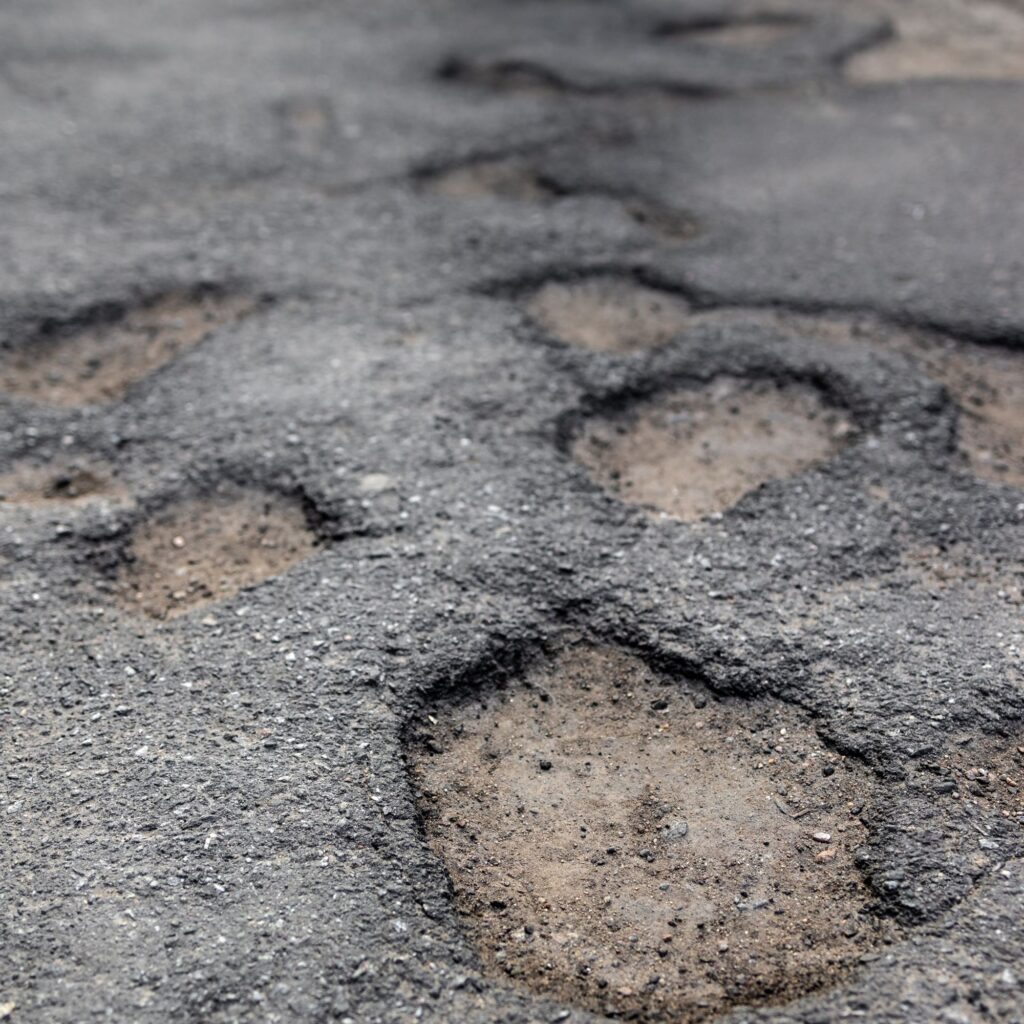
Dealing with potholes in your driveway can be a nuisance, but here’s how you can effectively address them:
- Assess the Damage: Take a close look at the pothole to determine its size and depth. Small potholes may only require minor repairs, while larger ones might need more extensive work.
- Safety First: Ensure your safety by marking off the area if necessary to prevent vehicles or pedestrians from accidentally stepping into the pothole.
- Remove Debris: Clean out any loose debris, dirt, or gravel from the pothole. Use a broom or a stiff brush to sweep away loose materials.
- Fill the Pothole: For small potholes, you can use a cold patch asphalt repair compound available at most hardware stores. Follow the manufacturer’s instructions for application. For larger potholes, consider using a hot asphalt mix, which provides a more durable repair. You can either purchase the materials and DIY or hire a professional asphalt contractor to handle it.
- Compact the Material: Once the pothole is filled with the repair material, use a tamper or a hand compactor to compact the material firmly. This ensures a solid repair and prevents the material from settling too much over time.
- Sealcoat the Driveway: After the repair has cured (usually 24-48 hours for cold patch, longer for hot asphalt), consider applying a sealcoat to your entire driveway. Sealcoating helps protect your driveway from further damage by sealing cracks and providing a protective layer against water, UV rays, and chemicals.
Regular Maintenance: Keep an eye on your driveway and promptly address any new cracks or potholes as they appear. Regular maintenance, such as filling cracks and applying sealcoat every few years, can help extend the life of your driveway and prevent costly repairs.
Consider Resurfacing: If your driveway has extensive damage or multiple potholes, you may need to consider resurfacing or replacing it entirely. Resurfacing involves adding a new layer of asphalt or concrete over the existing driveway, while replacement involves tearing out the old driveway and installing a new one.
Prevention: To prevent potholes from forming in the future, ensure proper drainage by keeping gutters and downspouts clear and directing water away from the driveway. Avoid heavy vehicles or equipment parked on the driveway for extended periods, as this can weaken the surface and lead to damage.
By addressing potholes promptly and maintaining your driveway regularly, you can keep it in good condition and avoid costly repairs down the road.
